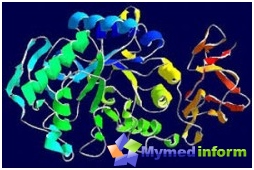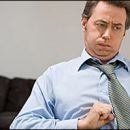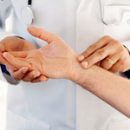General information about diverticulosis
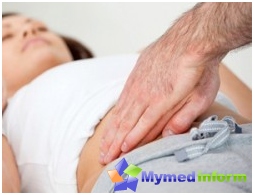
Diverticulus are called pathological bags, appendages (special anatomical structures) that are formed due to dystrophic changes occurring in the muscular walls of the colon. The term happened from the Latin word «diverticulum», which can be translated as «road to».
As the age age is increasing, the incidence of diverticulosis increases. For example, the statistics on the European continent are as follows: the diverticuls are already revealed for each tenth resident who has undergone forty years, every third inhabitant, the age of which is more than sixty years old and every second inhabitant, if his age has passed for seventy five years. Symptoms are associated with what kind of department formed diverticulus. Most often diverticula «prescribed» In the distal sections of the large intestine (this is 90% of cases). Moreover, 50-60% of the specified number are localized in a sigmoid intestine and only 10% - on the right side of the large intestine. In the rectum of such education, doctors have not yet discovered.
At diverticulosis, complications may appear:
- inflammatory processes in the diverticuls;
- bleeding;
- disorder of intestinal intestinal (perforation);
- Intestinal obstruction;
- formation of infiltrates;
- external or internal fistula.
Why diverticulosis arises?
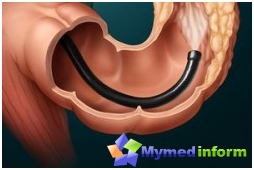
First, the gastroenterologist polls the patient, examines it, proves the belly (palphens), prescribes the analysis of feces and blood.
To find out if the patient has a diverticulosis, help:
- X-ray study (irrigoscopy) conducted with contrasting substances (barium enema).
- Tomography.
- Colonoscopy is a survey that allows you to notice and identify various complications of diverticulosis, such as diverticulites (inflammation), their length, argenition (the presence of holes), ulcers, sections, where there is oncological rebirth of cells.
Recommendations for treatment
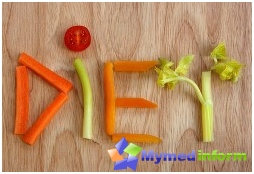
Treatment of this disease is long-term, the nutrition plays important. If the disease proceeds without complications, the treatment is carried out at home. Patients are recommended for food with such products that are rich in food fibers. In plant tissue contains: pectin, unsecured polysaccharides, alginates, lignin, cellulose and hemicellulose. They are able to bind water molecules in the list of intestines, resulting in increasing the volume of semi-liquid bowel content, the pressure in it is reduced. In a large intestine, carriages are transported faster and evacuated, and toxic substances are also derived from them. In addition, fibers - a good reproduction environment for useful microflora, which will then be out of harmful microorganisms.
Extremely useful wheat bran of the so-called coarse grinding. In the food suffering from the diverticulosis, they are introduced gradually, the initial daily dose is 5-10 grams, then it is adjusted to 30 grams per day. Take 2-4 cutlets of bran, fill them with 200 ml of boiling water. Leave for 40 minutes. Cuts prepared in this way can be added to fermented milk products, porridge, soups, vegetable and fruit dishes.
Do not be afraid if in the first weeks such a diet in the abdominal pain will suddenly increase. During this period, the doctor may assign antispasmodic drugs, for example, But-shp, Metechopan, meteorovmil.
Sources of dietary fiber are such vegetable tools like Mukofalc, Spain, FireBex, Solgar Psychology, Fitetucil.
What else can be recommended to include in diet with diverticulosis?
- Vegetable soups and casseroles.
- Porridge from buckwheat or wheat cereals in which vegetable oil added.
- Bread, consisting of which there is bran or coarse flour.
- Baked Vegetables and Fruits.
- Sea cabbage, flax seeds.
- Equality products (among them Preference, give Kefiru, Maceoni, home cooking yogurt).
- Fresh fruits, vegetables, greens.
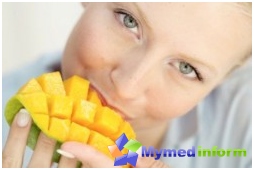
Liquids need to use no less than two liters per day.
Try to avoid products that have astringent properties, inhibit intestinal peristalsis:
- Rice and manna porridge.
- Pasta made of top grade flour.
- Bread, in which there are top grade flour.
- Seeds, nuts, grains (due to the risk of cluster in the diverticulas).
- Bean, grapes, watermelons.
- Coarse fiber products (persimmon, radishes, radish, raw white cabbage).
- Fast Fud, semi-finished products, cakes, cakes.
- Strong tea, coffee, carbonated drinks.
- Chocolate, Cocoa, Red Wines.
If necessary, the doctor discharges drugs:
- Intestinal Motoric Stimulants - Domperidon (Motilium, Motilak, Passenger).
- Enzyme preparations - Festal, Enzystal, Mezim.
- Laxatives containing lactulose - Duhalak, Norma, Poslabin, Romphalk.
- Means contributing to the normalization of useful intestinal microflora - Linex, Bifiform, Bifidumbacterin, Hilak Forte.
- Antibiotics (in case of inflammation, for example, cephalexin, clindamycin).
If the disease is progressing, the patient gives a direction to the hospital to adjust therapy. With inflammation, the amount of fiber in food is limited. In the case of diverticulitis, doctors often carry out surgical intervention, removing part of the intestine, where the diverticulus are located. Timely appeal to the doctor, compliance with his recommendations, prevents such complications as severe bleeding, intestinal obstruction, fistula, intestinal perforation, peritonitis.
To prevent the formation of diverticulus, try to include in your food a lot of fresh fruits, vegetables, boiled bed, bread with bran. Watch the intestine empty in a timely manner. Be moving, walk a lot on foot, make gymnastics.



